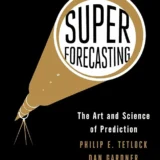
Terrance dug a groove into a slab of limestone, stenciling an ideograph into a large flat surface. It proved delicate work. The soft rock tended to chip and crack at the slightest application of horn, but the triceratops, gray and proud, was considered one of the finest sculptors of the Cretaceous, and tool work was his specialty.
“This,” the dinosaur thought projected, “will last the ages.”
The critic, because there always must be a critic, squinted, then probed, beak close enough to the chiseled-out powder to elicit a sneeze.
“It’s rather square and apelike,” she said, disapprovingly.
Terrance waddled around the slab, pebbled belly grazing the ground, round eyes glistening. He considered her observation for a long time.
“I’m carving the future and the future will be a shared community.”
“With them?” The critic snorted through two slits on the side of her face, slowly raising from four legs to stand shakily upright on two. She wore a bright red coat of scales slashed with green triangular stripes. “But they’re so stupid. I doubt they’ll ever evolve past the monosyllabic stage.”
Terrance ignored her. Only days remained before his opening on the eastern island and the telekinetic pterodactyls were threatening to strike again. There was still too much to do.
He focused.
The rear of each Moai shimmered with complexity, the back of the busts’ heads more alive by far than the front- layered as they were with ideographs, curved lines and circles. Would the whole create an atlas… a full globe or would it thud like a meteor upon the shelf? Would they answer some question not yet considered?
Terrance grinned.
It took effort to resist the impulse to sketch out one more clue into the limestone. The triceratops considered his thumbnails and working sketches; each scratched into nearby trees. He compared these to the nearly finished product with a studied eye. The pressure to live up to reputation weighed on the famed sculptor.
This latest installation might prove his most important. The younger wave was trespassing, making daily inroads upon his celebrity. Terrance chose man as his subject because of their recent inclusion on the endangered species list. Each sculpture featured flat eyes and a wide mouth because the sculptor sought to encapsulate the true essence of the species-not very bright, but always yapping. (**This latter trait, while annoying, was one of the chief reasons that the pseudoleptarous believed that the bite-sized species might eventually develop speech).
“Your Moai would be better if made of basalt,” the critic sniffed, “Using limestone just makes your work seem hulkish.”
Terrance paused to consider, then shook his head. He didn’t enjoy foraging near volcanos. Still, basalt or tuff could lend his work a certain “native authenticity…” once man learned to use tools.
“I…”
Something shook in the shrubbery. Critic and sculptor looked to the left.
“I’m sorry,” Terrance thought projected, “The reveal isn’t scheduled for—“
A thing of shimmering plates and scales pushed its grass green speckled nose through a brace of prickly branches. Its legs clanked and groaned. Its toes never flexed. Even stranger, no muscle expanded or contracted as it stepped.
“Is that one of yours?” The critic said, leaning forward.
“I… I don’t do kinetic art,” Terrance spluttered, swiveling his mass towards the intruder. “Hello?” the sculptor thought projected at the thing, but received nothing in return, not even the buzz of introversion.
“What is it? That’s not supposed to be alive, is it?”
Terrance stamped towards the two footer with an appraising smirk.
“I think it’s supposed to fool us.” Terrance tapped the thing’s long metal neck gently with one of his keratin covered bone horns. His efforts produced a ringing tinkle not unlike a running stream.
“Good workmanship,” he declared.
“Hardly naturalistic,” the critic poo-pooed.
The intruder backed away, its overlapping scales of metal and plastic clinking and clattering, its eyes filling with hazy light. It blinked, producing a snapping sound, like that of a small stick breaking. On top of its head, two shiny spine plates sprouted. Each swiveled in opposite directions while emitting a faint buzzing sound. These rotated constantly.
The pair of dinosaurs clucked their tongues thoughtfully.
“I think I like it,” Terrance pronounced, “It’s primitive, but…”
Whomp!
“Rejected!” the critic announced, smashing a two ton tail into the side of the kinetic art piece. The thing fell over with a clatter. Terrance closed his eyes as the critic stomped and swatted and tore the thing apart. Then, with a self-satisfied shake, the critic clapped her hands together.
Terrence regarded the mess of plates, scales, and snaking vines. He hated critics. With a sigh, he turned back to his Moai even as the critic scattered wiring and bits of insulation to the winds. He hoped for a better verdict on his own work.
#
Sixty-five million years later:
“How’s the survey going?” Dr. Trevaugn Spinks asked Emma Rosier. The junior anthrozoologist pursed her lips and adjusted several knobs.
“Failure,” she said, “the robot was destroyed almost immediately after it made first contact.”
Dr. Spinks leaned forward and scrolled through the footage captured by the robot observer.
“I see,” he said after a moment, “It seems that the locals considered our robot a rival. We need to make a less realistic dinosaur.”
The graduate assistant’s shoulders slumped, but Spinks shook his head.
“Don’t take it so hard. Trial number six yielded an important clue. Notice that the attack occurred despite our robot having no scent. This suggests the importance of visual triggers when it comes to species’ aggression.”
Rosier agreed. She zoomed in on a freeze shot of what looked to be a nearly finished green Easter Island sculpture behind a lumpy-looking triceratops. The transmat-image was rough, but she could just make out score marks around the eyes and lips. Her mouth opened to voice the observation, but hesitated.
“I suggest future anthrozoological expeditions use automated insects,” Spinks declared. “That might lessen chances of losing a robot to territorial instinct.”
Rosier nodded several times. It wasn’t a perfect fix. The smaller robots would have less capacity to store and transmit data. Still, the team had already lost six dino-units and grant money couldn’t be stretched indefinitely.
“Well, if we’re going to send insects back through time…” Rosier said with a wink at the engineering team, “We’re going to have to build a whole lot of butterflies.”
END








